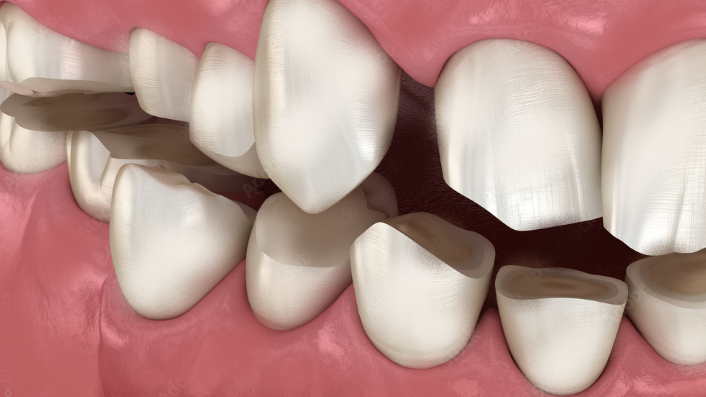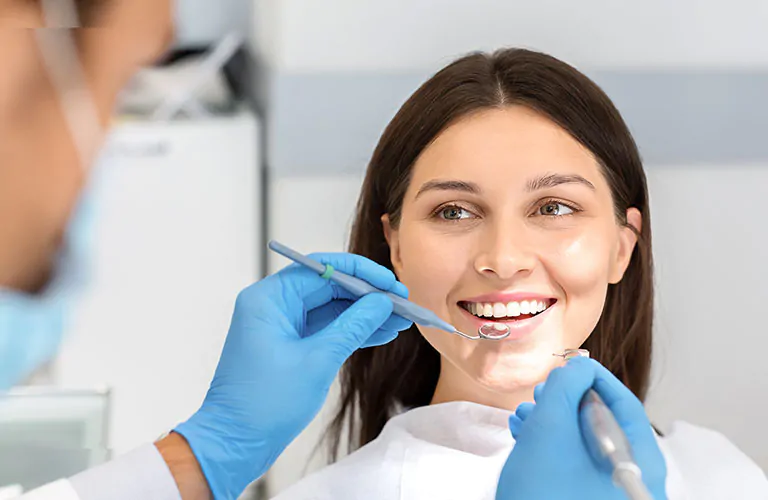The Impact Of Clenching And Grinding On Dental Structure And Treatment

Many people unknowingly harm their teeth by clenching and grinding. These bad habits can wear down your dental structure quickly. You might notice frequent headaches or jaw pain. Over time, this leads to cracked or broken teeth, a sign of serious damage. A Fresno family dentist can help address these issues. They offer personalized advice and treatment options. Solutions may include night guards or stress management techniques. These simple steps protect your teeth from further harm. Understanding the signs and seeking help early can prevent long-term dental problems. By paying attention to your habits, you can maintain a healthy smile. Recognizing the impact of clenching and grinding is the first step to healthier teeth. Many find relief by addressing these habits sooner rather than later. Investing time now in your dental care will save you discomfort down the road. Don’t wait until the damage is done. Act now for a healthier mouth.
Understanding Clenching and Grinding
Clenching and grinding, also known as bruxism, affects many people. It often occurs during sleep, making it hard to control or even notice. Stress is a common trigger, leading to muscle tension and unconscious grinding. Oral damage is not the only problem. You might also experience discomfort in your jaw, neck, or shoulders.
Recognizing the Symptoms
Early detection can prevent more serious issues. Watch for symptoms like:
- Worn enamel
- Chipped or flattened teeth
- Sensitivity to temperature
- Lockjaw or limited mouth opening
If these signs are familiar, consult a dental professional. They can confirm if clenching and grinding are the culprits.
Treatment Options
Fortunately, many solutions are available. Night guards, for example, offer a barrier between your teeth. They minimize damage caused by grinding. Custom-fitted guards ensure comfort and effectiveness.
Behavioral changes can also help. Reducing stress through exercise or relaxation techniques may reduce incidents of clenching. Dental professionals might recommend physical therapy if necessary. Each step aids in preserving your dental health.
Here is a comparison of common treatments:
| Treatment | Benefits | Considerations |
|---|---|---|
| Night Guards | Prevents tooth damage, customizable | Requires regular cleaning |
| Stress Management | Improves overall well-being | May take time to see effects |
| Physical Therapy | Relieves muscle tension | Needs multiple sessions |
Long-Term Consequences
Ignoring bruxism can lead to significant dental issues. Untreated, it can cause tooth wear, fractures, and even tooth loss. Jaw disorders, such as temporomandibular joint (TMJ) dysfunction, might develop. These conditions may result in chronic pain and discomfort.
According to the National Institute of Dental and Craniofacial Research, proactive care is crucial. This includes regular dental check-ups, allowing early identification and treatment of issues.
Prevention and Maintenance
Prevention is the best cure. Regular dental visits catch problems early. Dentists provide education on maintaining oral health, including the importance of proper alignment and bite. Maintaining dental appointments every six months minimizes risks associated with bruxism.
Additionally, learning about ergonomic mouth positioning during sleep can be beneficial. Developing a routine that reduces tension before bed may decrease nighttime clenching. Simple changes in lifestyle promote better dental health and overall well-being.
Conclusion
Understanding and addressing clenching and grinding is vital. These habits can lead to severe dental damage and discomfort. By recognizing symptoms early and exploring treatment options, you protect your teeth and health. Consulting a professional, like a Fresno family dentist, offers personalized solutions tailored to your needs.
Acting now means preventing long-term issues. Take charge of your dental health today. For further information and resources, visit the Centers for Disease Control and Prevention oral health page. Your journey to better oral health starts with the right knowledge and action.




